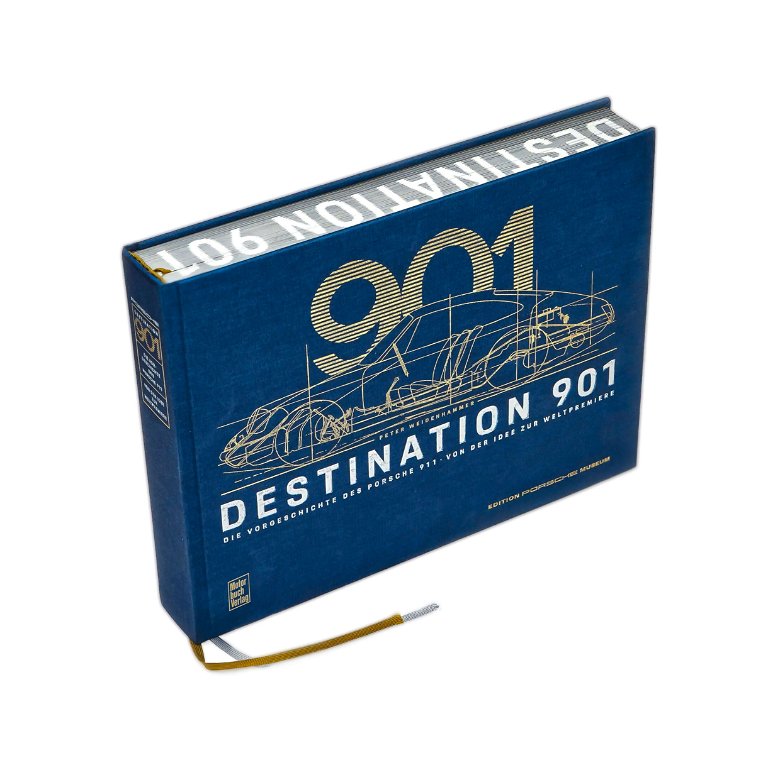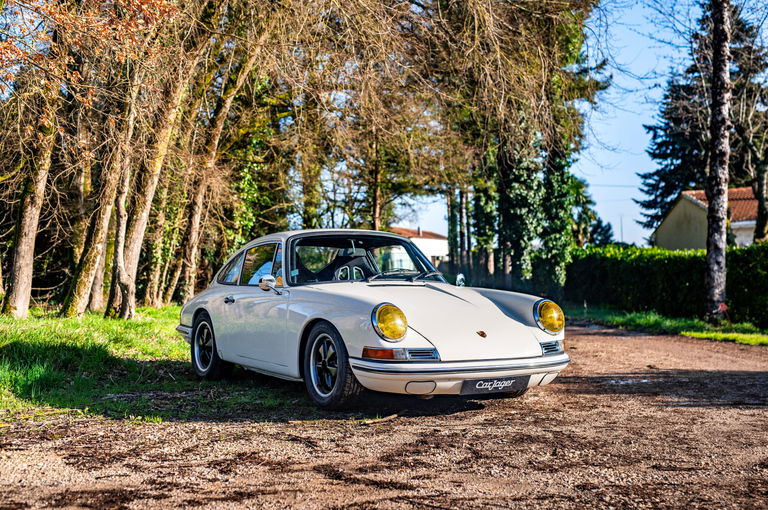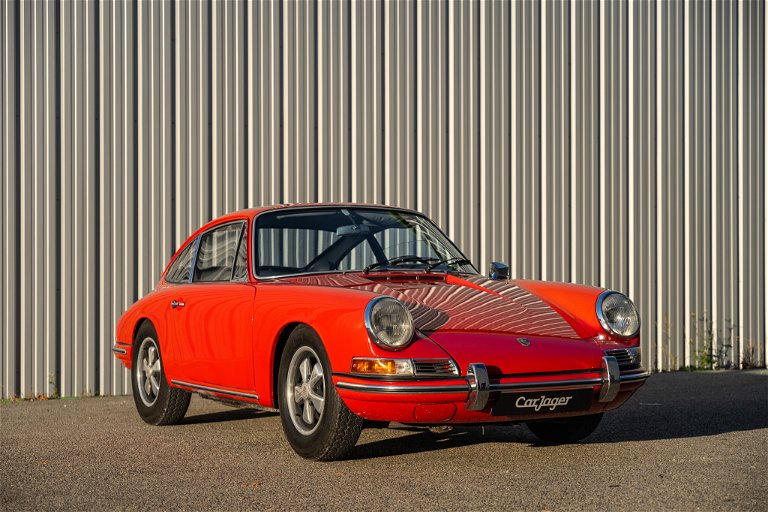He entrusted the restoration of the hull to the renowned Porsche specialist RSC in Belgium, with MATTER installing a welded roll bar, while the engine were entrusted to the famous Porsche engine builder RUGEN. Numerous parts were developed by the great tuners THUTILL, ALBINS in Australia, Art Wheels etc…The car has benefited from a complete overhaul of the engine by RUGEN and has not been driven much since, although the engine delivers 200hp. The car is now ready to race, with updated safety equipment and its FIA PTH. It will be delivered with all its original parts removed during preparation, two extra sets of rims, a nice file confirming that the car’s maintenance has not been subject to any spending restrictions. And all the photos of the bare-shell reconstruction. This is a rare opportunity to acquire a superb 1965 Porsche 911 racing car! Eligible for the Tour Auto, Le Mans Classic and above all the highly competitive 2.0L Cup monotype championship.
Few sports cars have proven as versatile as Porsche’s timeless 911, a model that has proven itself capable of being a true grand tourer as well as a rally and circuit car over the past 50 years. A „modern classic“ if ever there was one, the 911 was unveiled at the 1963 Frankfurt Motor Show as the 901, but shortly after it went into production in 1964 became the 911, following a complaint from Peugeot, which had filed a complaint about the use of the central zero for its models. The rear overhung engine architecture of its 356 predecessor was retained, but the 911 used a monocoque structure for its construction and abandoned the Volkswagen-derived suspension of the 356 in favor of a more modern strut and trailing arm McPherson system. In its first incarnation, Porsche’s 1991cc air-cooled, single overhead cam flat six developed 130 bhp.
When Porsche began to look at ways to improve its successful 356 model in the mid-1950s, it quickly became apparent that a simple evolution would not be enough. The potential changes to the 356 were such that an entirely new model had to be developed. The new Porsche would offer more space for occupants, as well as sufficient storage space for a set of golf clubs. The performance level of the new model was to match that of the 356 Carrera 2, while retaining the refinement of the ’normal‘ 356. The basic platform layout was to be retained, as well as the familiar Porsche silhouette.
Ferdinand, Ferry Porsche’s eldest son, was responsible for the design, developing the chassis and bodywork, while his cousin, Ferdinand Piëch, developed the air-cooled flat-six. The first advertisements for the new car stated: „… to design and build – almost without compromise – the ultimate car for getting from one point to another in the fastest, safest and most enjoyable way possible.“ The 911 is new in every detail, but it is undeniably a Porsche.
Thanks to Ferdinand Piëch, the 901/911 was designed as a racing car from the beginning. This is particularly clear in the engine design with its dry sump and overflow Solex carburetors, both of which were developed in racing to make the engine run more smoothly. The overflow carburetors were unfortunately to prove unsuitable for road use.
As early as 1964, the factory had equipped ten 904s with the six-cylinder 911 and named them 906s (which is the prefix of their chassis number). This led to confusion with the 906 Carrera 6, so the name 904/6 was preferred. These 904-906s were used to test the 901 engine for competition use in the 911. As it seemed to work well, it was decided not to wait any longer and to enter a 904/6 in the 49th Targa Florio. The race was won by a Ferrari 275 P2. The Italians did well to savor this victory, because the next five editions were won by Porsches. Second place went to an eight-cylinder Spyder 904 Kanguruh followed by a 904/6 (Maglioli-Linge) with a 901 engine. This was the first race appearance of the six-cylinder 911 in a version boosted to 210 hp at 8,000 rpm (901/20 engine). During the course of the year, this engine proved to be remarkably reliable. The green light was therefore given for the creation of a sports version of the 901 for the 911 S.
The 911, a sedan?
At the time of the 911’s racing debut, it was still possible to enter identical cars powered by different engines in different classes. Of course, this required discussions with FIA officials. Fortunately, Porsche could count on the diplomatic skills of Huschke von Hanstein to obtain homologation for the 11 and 911L in Group 2 (touring cars) and the 911T and 911S in Grand Touring (Group 3). Even a lightweight, unbroken 911T like a 911S is approved as a GT car with a dry weight of 923 kg.
The reason for the FIA’s tolerance is that the first competition 911s were very similar to the production models, at least until the A-series. The only changes were in ride height and torsion bar settings. The gearboxes could be fitted with gears suitable for all kinds of competition.
From the point of view of the regulations, Porsche had an unquestionable advantage because the FIA considered the 911 to be a sedan, which even allowed it to take part in certain races where sports cars were forbidden. The commercial benefits were nil as the public considered the victories to be unfair, as the 911s were obviously GTs.
The only drawback was that in Group 2 (Touring) and Group 3 (GT), the 911s could not benefit from any increase in engine capacity above 2 liters. Of course, the 911s entered in the Prototype Class could have engines with increased displacement within the limits of the regulations.
If the increase in displacement was forbidden, it was of course possible to increase the power.
For this purpose, Porsche had obtained the approval of „kits“. For the 911 and 911L, they made it possible to easily reach 160 hp. The engine was then called „Rallye“ or 2000R. For the 911T and S, the factory supplied an engine identical to that of the Carrera 6, but without the dual ignition. An even more advanced version (with titanium connecting rods) was available, which was reserved for the 911T racing cars.
Rallye de Monte-Carlo 1965:
This year, to everyone’s surprise, a 904 finished second overall in the 34th Monte Carlo Rally. It was driven by Böhringer (a private hotelier and former Mercedes racer) with Wütherich (James Dean’s mechanic) as co-driver. The winning car was a Mini Cooper, much better suited to the terrible winter conditions of 1965, and no one foresaw that Porsches would ever beat the Mini. Just as no one noticed the participation of a 911, the fiftieth 911 to come off the Zuffenhausen production line, whose baptism of fire in competition was the first of its kind. Driven by the extremely experienced factory driver Herbert Linge and engineer Peter Falk, it finished an astonishing fifth overall and second in class.
Season 1965:
Porsche’s participation in the other rounds of the European Rally Championship was a failure. It must be said that Huschke von Hanstein did not consider this to be an activity worthy of great financial effort. Even when rallying becomes a Porsche specialty, it will be with derisory means compared to those devoted to prototypes. It is true that the publicity given to Porsche by the results of the 917 prototypes will somewhat overshadow the rally victories of the small
911. It took all the persuasion and talent of Vic Elford to get Huschke von Hanstein to admit that this was an opportunity not to be missed.
24 Hours of Le Mans 1966:
Another historic event that goes unnoticed: the first participation of a 911 at Le Mans. It was a virtually original 911S, 1965 model (chassis 303.355), which was entered in the GT category (under number 35) by Jacques Dewez. Driven by Kerguen and „Franc“ (Dewez), it finished fourteenth in the distance classification and twelfth in the performance index at an average speed of 159 km/h.
At the end of the race, it was put up for sale and left as it had arrived, by road.



























